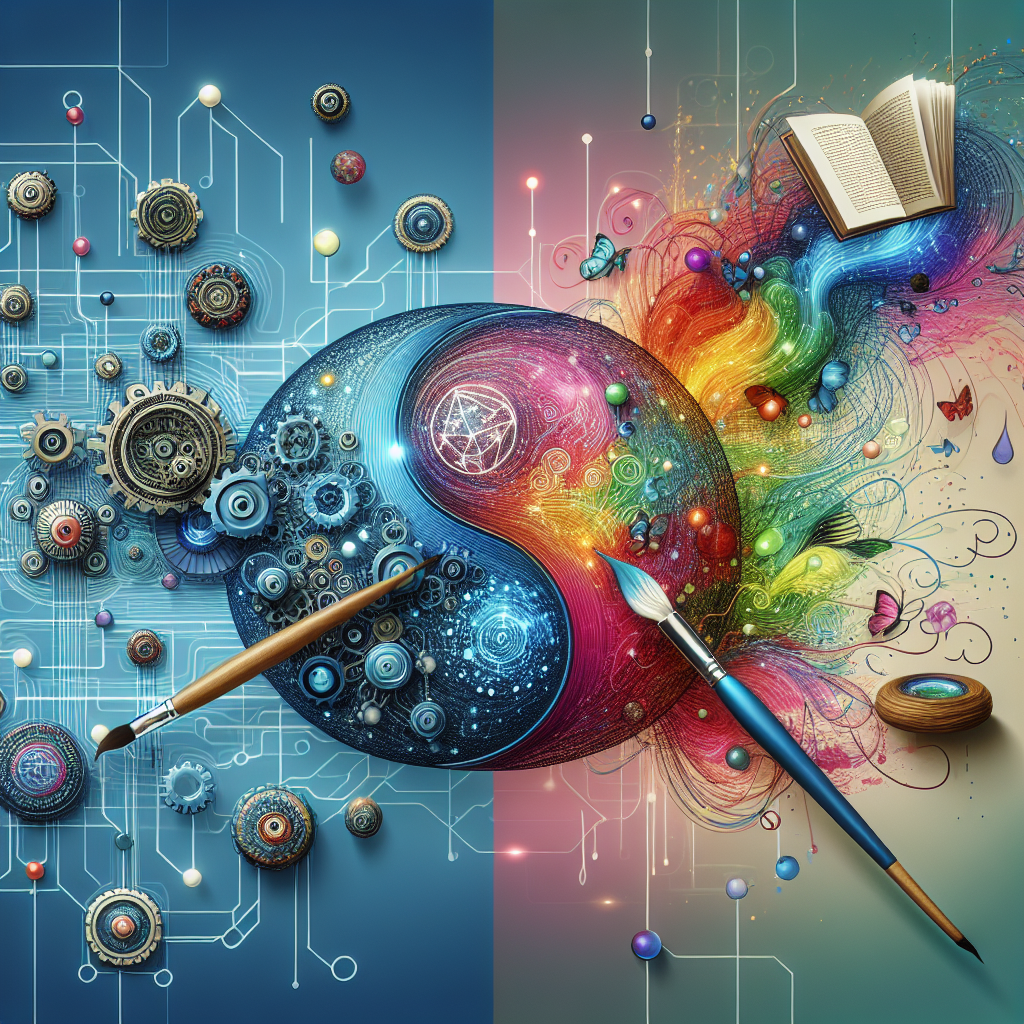The Intersection of AI and Creativity: A Look at the Latest Innovations
Artificial Intelligence (AI) has been revolutionizing many industries in recent years, and the creative field is no exception. AI technologies are increasingly being used to assist and augment human creativity, leading to new and innovative possibilities in fields such as art, music, design, and literature. In this article, we will explore the intersection of AI and creativity, and take a closer look at some of the latest innovations in this exciting field.
AI in Art
One of the most well-known applications of AI in the creative field is in the creation of art. AI algorithms can analyze vast amounts of data to create unique and original pieces of art, ranging from paintings and drawings to sculptures and installations. One prominent example of AI-generated art is the work of artist Mario Klingemann, who uses neural networks to create digital art pieces that blur the line between human and machine creativity.
AI in Music
AI has also been making waves in the music industry, with algorithms that can compose, produce, and even perform music. Companies like Amper Music and Jukedeck have developed AI systems that can generate royalty-free music for videos, commercials, and other media projects. AI can also be used to analyze music data and predict trends, helping musicians and producers create hit songs that resonate with audiences.
AI in Design
In the field of design, AI tools are being used to streamline the creative process and generate new ideas. Tools like Adobe Sensei and Canva’s Design AI can help designers automate repetitive tasks, generate color palettes, and suggest layout options. AI can also be used to analyze user data and feedback to create personalized design solutions that cater to individual preferences and needs.
AI in Literature
AI is also being used to assist writers and authors in the creation of literature. Companies like OpenAI have developed language models like GPT-3, which can generate human-like text based on a given prompt. These AI systems can be used to help writers overcome creative blocks, generate new story ideas, and even write entire articles or books. While AI-generated literature may lack the emotional depth and nuance of human writing, it can still be a valuable tool for brainstorming and inspiration.
Challenges and Ethical Considerations
While the intersection of AI and creativity offers many exciting possibilities, it also presents challenges and ethical considerations. One of the main concerns is the potential for AI to replace human creativity and artistic expression. Critics argue that AI-generated art, music, and literature lack the emotional depth and authenticity of human creativity, and that relying too heavily on AI could lead to a homogenization of artistic expression.
Another concern is the issue of ownership and attribution. Who owns the rights to AI-generated art, music, or literature? Should the AI system itself be credited as the creator, or should credit be given to the human programmer who designed the system? These questions raise complex legal and ethical issues that need to be carefully considered as AI continues to play a larger role in the creative field.
FAQs
Q: Can AI truly be creative?
A: While AI can generate new and original content, many argue that true creativity requires human emotion, intuition, and imagination. AI lacks the ability to experience emotions or make intuitive decisions, which are essential aspects of human creativity.
Q: How can AI be used to enhance human creativity?
A: AI can be used to assist and augment human creativity by automating repetitive tasks, generating new ideas, analyzing data, and providing inspiration. By leveraging AI tools, creatives can streamline their workflow and explore new creative possibilities.
Q: What are some examples of AI-generated art?
A: Some examples of AI-generated art include paintings, sculptures, digital art pieces, and installations created by neural networks and other AI algorithms. Artists like Mario Klingemann and Robbie Barrat have produced stunning works of art using AI technology.
Q: What are the ethical considerations of using AI in the creative field?
A: Ethical considerations of using AI in the creative field include concerns about ownership and attribution, the potential for AI to replace human creativity, and the impact on artistic expression and diversity. These issues need to be carefully addressed to ensure a balanced and ethical use of AI in creativity.
In conclusion, the intersection of AI and creativity is a rapidly evolving field with exciting possibilities and challenges. AI technologies are transforming the creative process, enabling new forms of art, music, design, and literature. While AI can enhance human creativity and provide valuable tools for artists and creators, it also raises important ethical considerations that need to be carefully considered. As AI continues to shape the future of creativity, it is essential for creators, policymakers, and society as a whole to engage in thoughtful dialogue and exploration of the potential of AI in the creative field.

